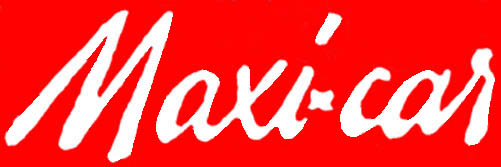

The standard hub choice of French randonneurs from the mid-1930s (perhaps earlier - the first mention I have is from June 1935, but I have no earlier sources) through the present (though production stopped sometime around 1999), Maxi-Cars (and their predecessors) are known for durability and reliability, not to mention being buttery-smooth.
The intent of this website is to basically provide a sort of "field guide to identication of Maxi-Car hubs", as well as a brief history of Maxi-Car. For a more in-depth treatment of this subject, check out the june 2004 issue of Vintage Bicycle Quarterly by Jan Heine (with a little help from me)..
The name Maxi-Car arose from the merger of hubshell designs from the established hub manufacturer Maxi with the annualar bearings used for hubs designed by Charles-Albert Ripet (C.A.R. = Car) of Lyon. Ripet had previously built hubs (and bottom brackets, both used first by Lyon constructeur Reyhand) himself, and apparently licensed the design to the fellow Lyon company Véga, which built hubs as well. All 3 brands (Maxi, C.A.R., and Véga) were produced in both alloy and steel, and were used on almost all the bikes in the touring technical trials - they were simply the best hubs available. C.A.R. hubs were first used by the French "constructeur" salon Reyhand, considered to be a premier artisian builder of the pre-war years. In around 1946, the first Maxi-C.A.R. hubs appeared, produced by the maker of Maxi, E. Depalle, from St. Etienne.
Time periods ("Types") here are defined primarily by the shape of the hubshell itself, though there were other, smaller design changes within these periods. Holes in hub flanges were introduced around 1961. Stickers on the hub barrel were first seen sometime in the mid-1960s. Machining around the stickers on the hub barrel first showed up sometime in the early 1980s, and then ceased sometime in the late 1980s.
At various points, Maxi-Car also provided custom hubs with undrilled flanges and/or larger axles to various makers. Interestingly enough, wheelchair hubs were, and may still be, produced under the Maxi-Car name - a logical direction for a company known for strong axles.
Thanks to Jan Heine for a ton of information, and also to Hilary Stone, Ken Denny, Olaf Stroh, Satoru Matsuda and Jack Bissell, as well as to Grant Handley and Mark Bulgier and others for unwittingly providing me with images from their websites and auctions.
As always, assistance is greatly appreciated - If you've got more info for me, please do contact me! I'm currently on the hunt for the following information: